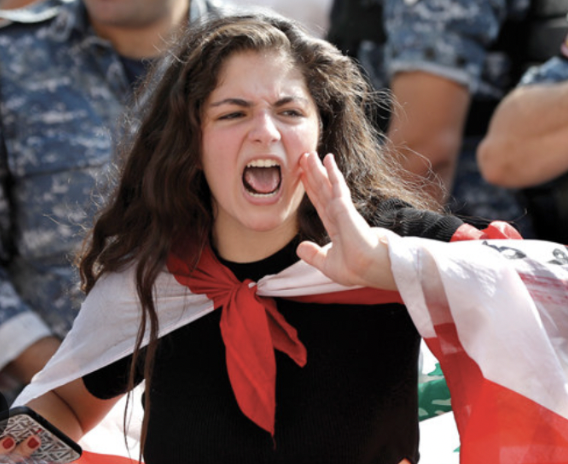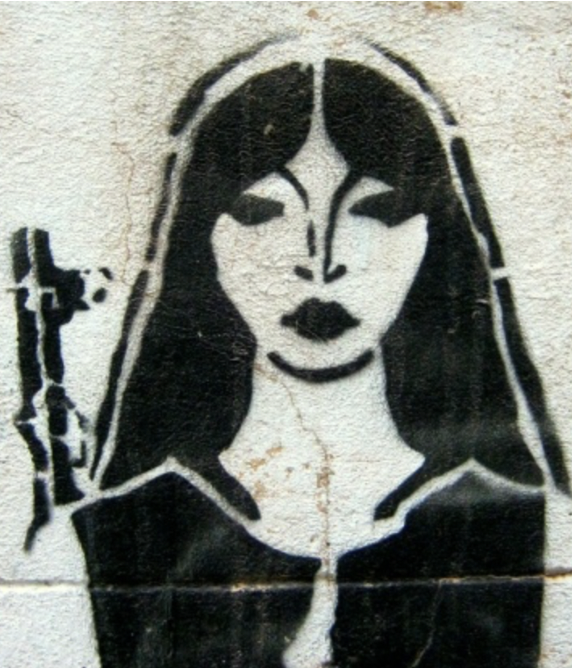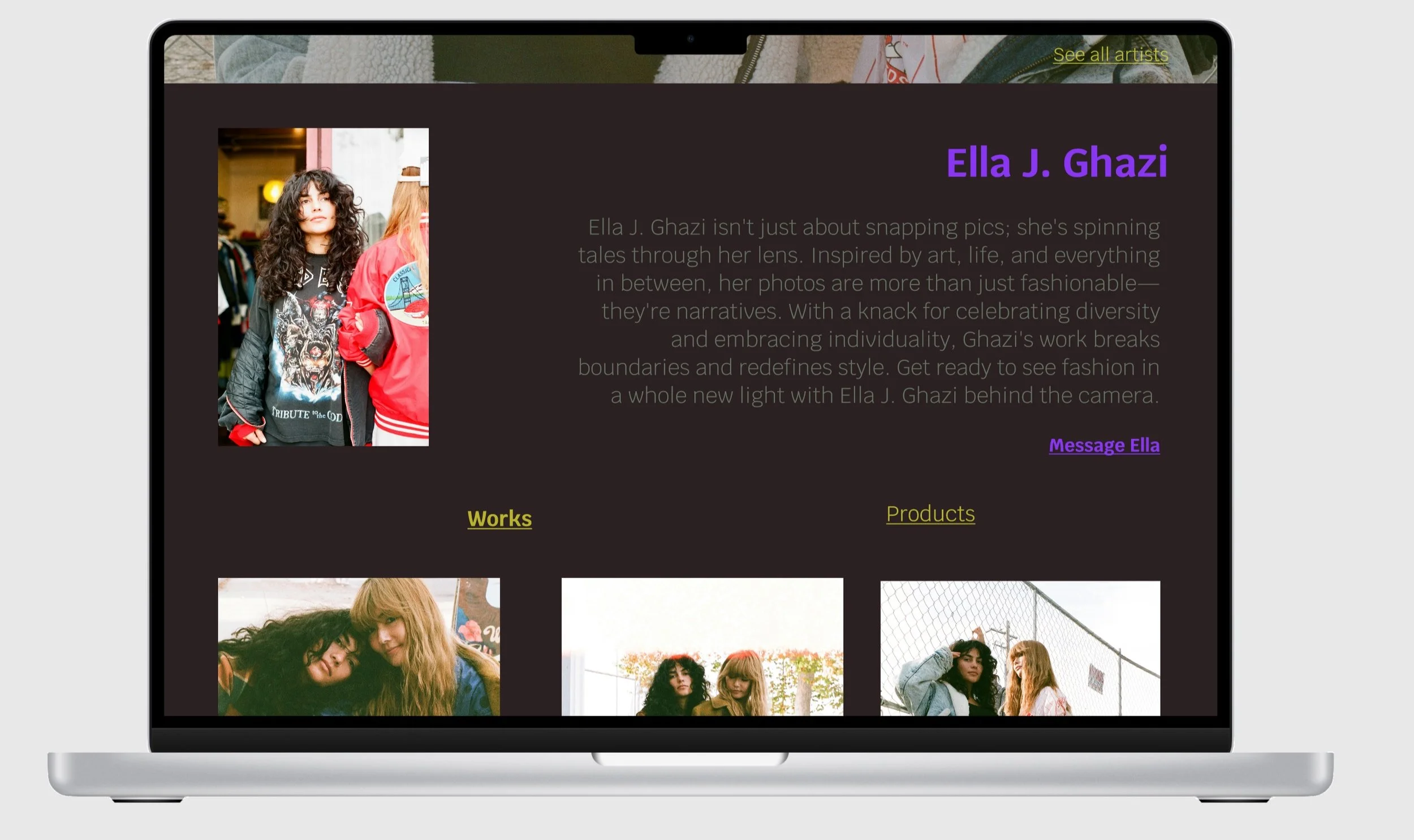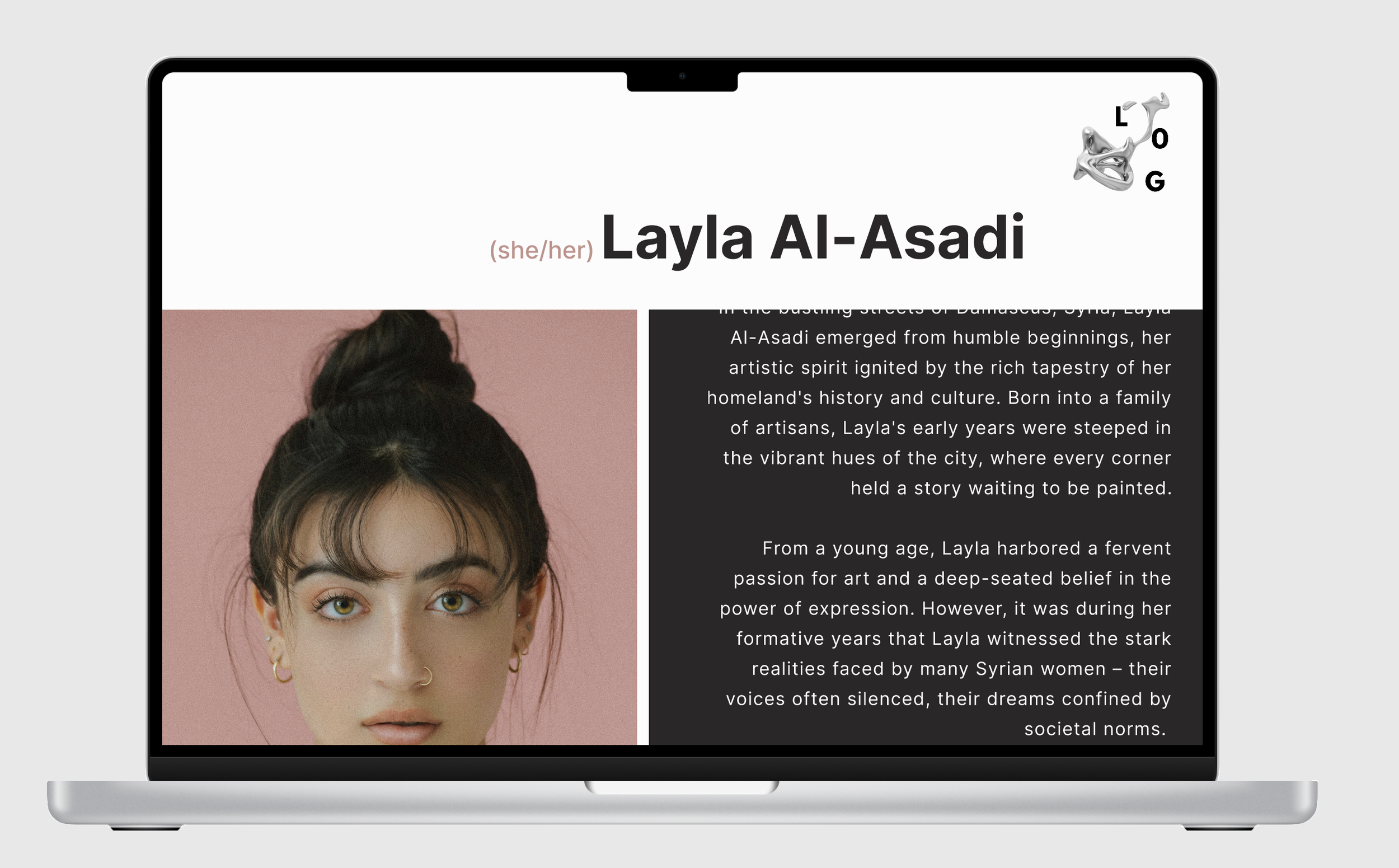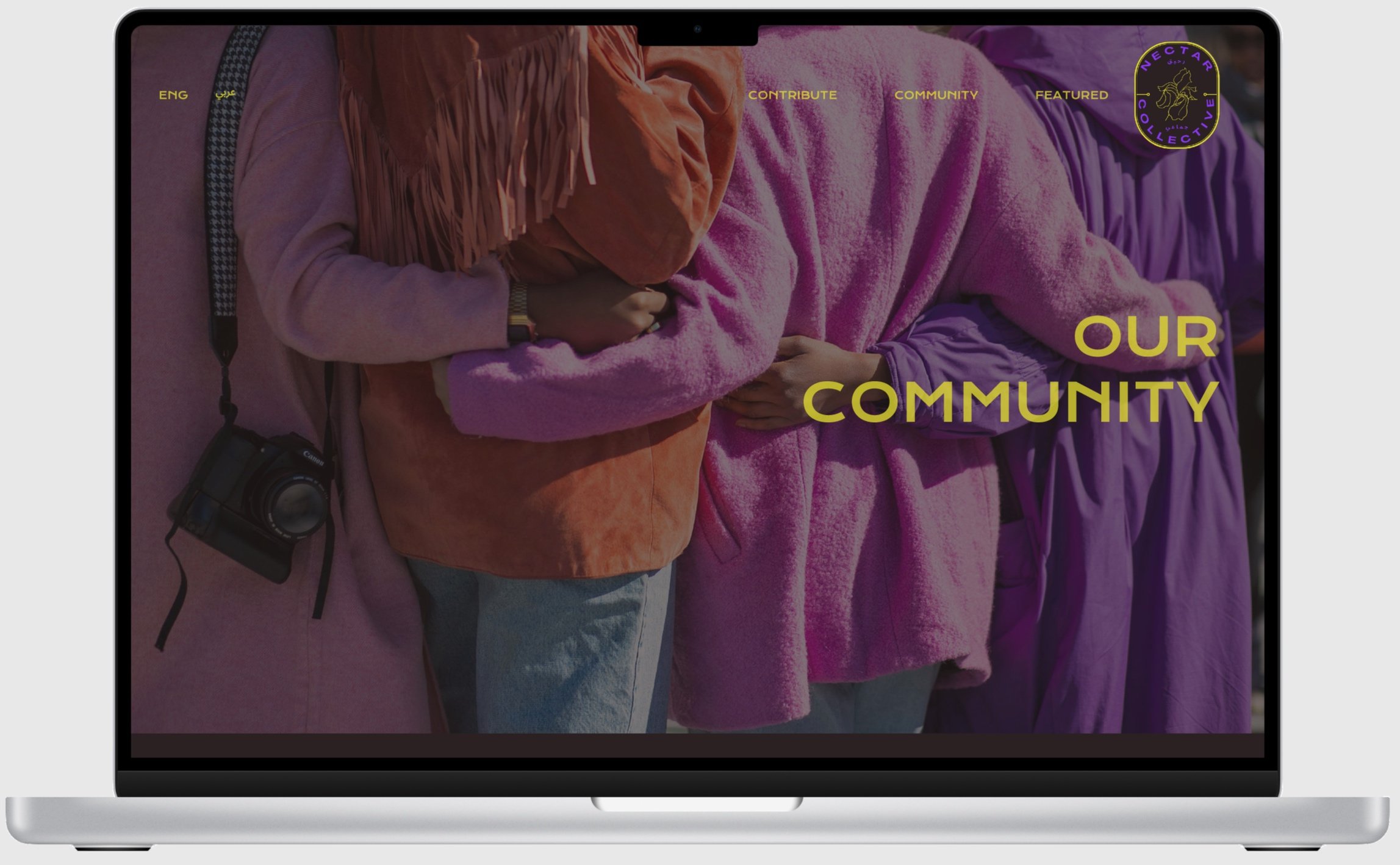Nectar Collective
Redefining Middle Eastern Artistic Identity
Seeing a Need and Filling the Gap
Growing up as a Lebanese-American, I’ve always felt the tension between cultural representation and personal identity. Art has been a powerful medium to express this complexity, but as I spoke with Middle Eastern artists from the Levant region, I realized that many felt constrained by the expectations placed upon them. Some were seen as too traditional, their art reinforcing outdated stereotypes; others were dismissed for breaking away from cultural norms.This divide highlighted a critical need: a space where Middle Eastern artists—especially women—could be seen, celebrated, and connected beyond geographical and social constraints. That’s how Nectar Collective was born: a digital platform designed to amplify their voices, celebrate artistic diversity, and reshape perceptions of Middle Eastern identity through creative expression.
Addressing Today’s Cultural and Social Challenges
Through in-depth interviews with Levantine artists of all genders, I uncovered a recurring theme: exclusion. Many artists felt isolated if their work didn’t fit into expected narratives of Middle Eastern art. Women, in particular, faced additional layers of scrutiny—expected to either uphold tradition or be seen as rebellious outsiders.Nectar Collective directly addresses these issues by providing an inclusive platform where all forms of artistic expression are valued. By making visibility a core function, the platform ensures that artists are at the forefront of their own narratives rather than being defined solely by the art they produce.
Designing for Accessibility and Cultural Inclusivity
A major design challenge was ensuring that the platform was equally accessible to Arabic and English-speaking users without disrupting its architecture. Arabic, a right-to-left language, requires specific design considerations that don’t always align with left-to-right reading systems. I approached this challenge by creating a flexible, mirrored layout that adapts dynamically depending on the selected language. This allowed for seamless navigation in both English and Arabic, ensuring that neither language felt like an afterthought.
Key UI/UX considerations included:
Bidirectional Navigation: The site’s structure adjusts fluidly between RTL and LTR languages without altering the overall user experience.
Typography Adjustments: Carefully selecting fonts that maintain readability and aesthetic integrity in both Arabic and English.
Consistent Architecture: Ensuring that the switch between languages does not disrupt core design elements like menus, alignment, and user pathways.
Core Features: Visibility, Connection, and Action
-
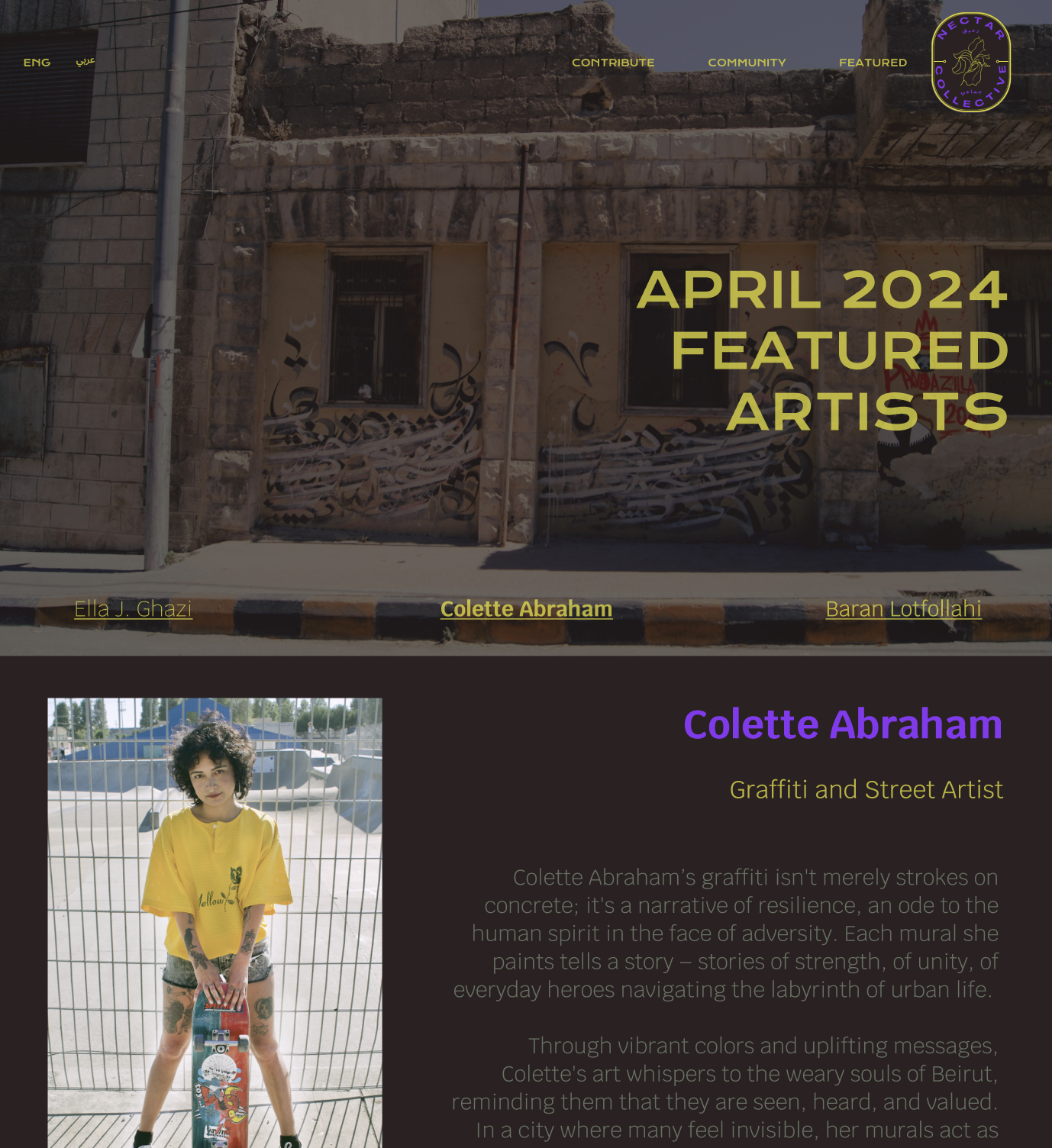
Featured Artist Rotation
A constantly updating showcase that highlights diverse artists across different mediums, ensuring visibility for underrepresented voices.
-

Artist Profiles & Direct Engagement
Beyond standard bios, artist profiles delve into personal motivations, creative journeys, and cultural influences. Users can also directly message artists, fostering meaningful connections.
-
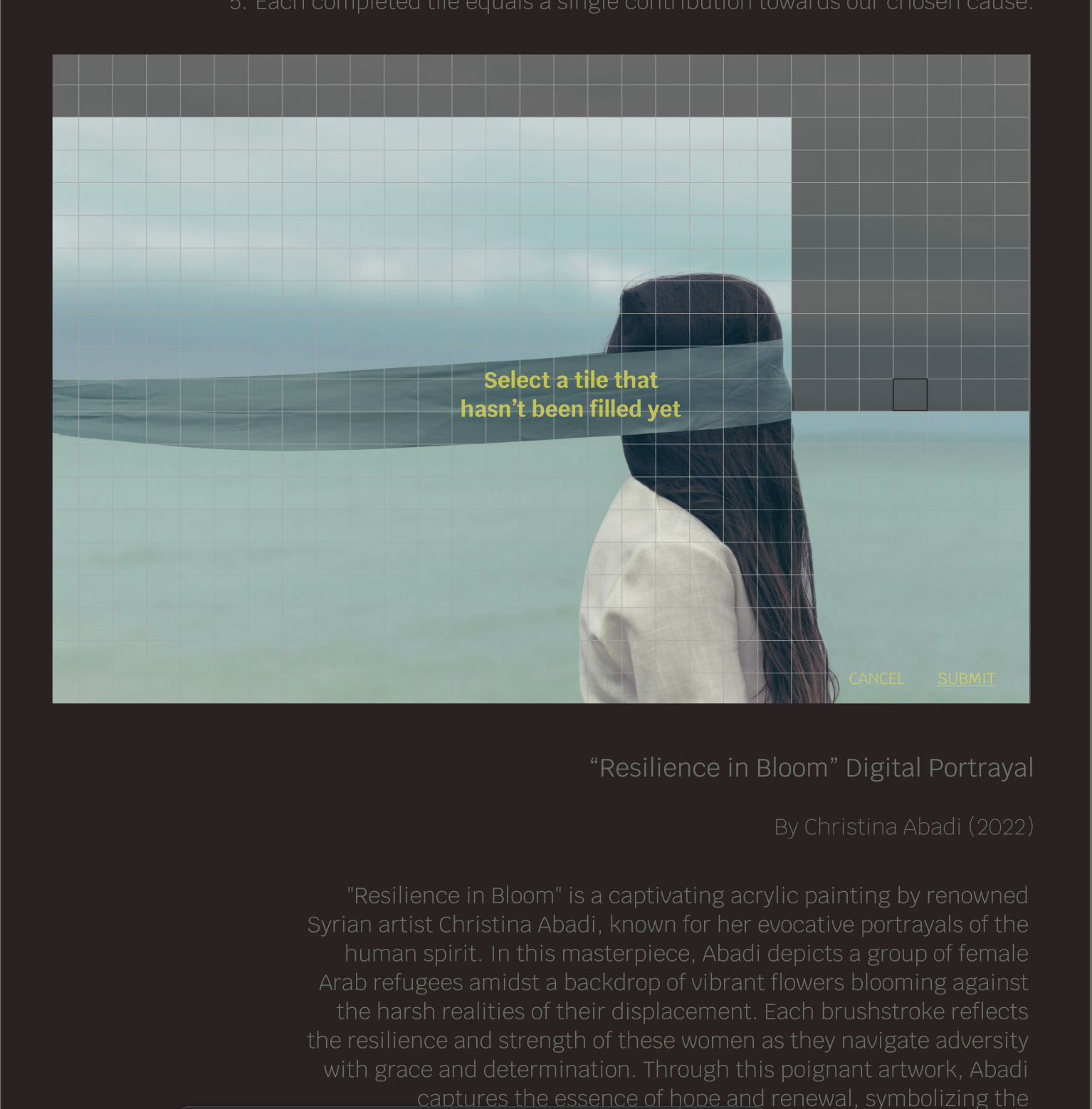
Digital Mosaic Contributions
A unique interactive feature where users contribute to culturally relevant causes by filling in pieces of an evolving digital mosaic—each tile translating into a financial donation.
-

Global User Hub
A dynamic directory where users can discover and connect with artists worldwide, emphasizing community-building and collaboration.
Evolving the Design: Key Iterations
Eliminating scrolling biographies in favor of more immersive artist storytelling.
Initially, the platform resembled a digital gallery, but through user feedback, I pivoted toward an artist-centered approach, placing creators at the heart of the experience rather than just their artwork.
Shifting from a sidebar menu to a fixed top navigation for better accessibility.

